St. Pete opens public comment on Trop plans
Now that the seven proposals for redeveloping the Tropicana Field site are public, St. Petersburg officials want to know what you think of them.
In keeping with Mayor Rick Kriseman’s focus on public benefits from the project, the city began taking public comments after releasing the plans late Tuesday.
The full plans are available here. The website includes a link to a form to submit public comments, available here.
A team of 26 reviewers, made up of a wide range of city staff, is also pouring is over the thousands of pages of proposals. The team will look for each plan’s strengths and weaknesses before turning its work over to Kriseman. The mayor then will make a short list of companies that will be subject to additional public scrutiny before a final developer is chosen.
The project has been described as a “generational” opportunity to transform a major part of the city, with or without a new baseball stadium. The 86-acre Trop site once was home to a thriving Black neighborhood, whose residents lost businesses and homes when the site was cleared to build a baseball stadium. City officials last year said they would be very intentional about ensuring the wellbeing of the Black community is incorporated into the new development plans.
All of the plans discuss “equity,” one of the guiding principles provided by the city to prospective developers. They also have unique approaches to common elements in those guiding principles, such as a focus on housing, office space and space for local small businesses, green space and parks, and transportation options.
Here’s a high-level overview of the seven plans. In the next few days, the St. Pete Catalyst will provide more detailed reports on key components of the projects.
Creekside
Master developer: Midtown Development LLC
Development team: 18 companies including Pinellas County Urban League, Studio@620, George F. Young Inc., PLACE Architecture, Real Building Consultants, VHB, Trenam Law, Holland and Knight
Plan highlights: Midtown committed more than $185 million, with the first $10 million in the form of an upfront payment to the city. The developer said it would commit to building or funding 1,000 affordable, workforce and/or moderate-income homes; creating sustainable jobs on-site with a local hiring program and local supplier program; and building 200,000 square feet of small box retail and creative office space.
The plan would take place in five phases, beginning in 2022 and ending in 2048. Total construction costs would range from $2.7 billion to $3.75 billion. Once completed, the project would create 20,000 jobs on site, contributing $1.4 billion annually to the local economy.
Focus on equity: “As part of Midtown’s commitment to economic equity, we will work through the Pinellas County Urban League with deep job training and employment opportunities designed to create permanent employment in meaningful numbers for those that were formerly ejected from the more than 500 homes and more than 30 businesses when the site was known as the Gas Plant neighborhood.”
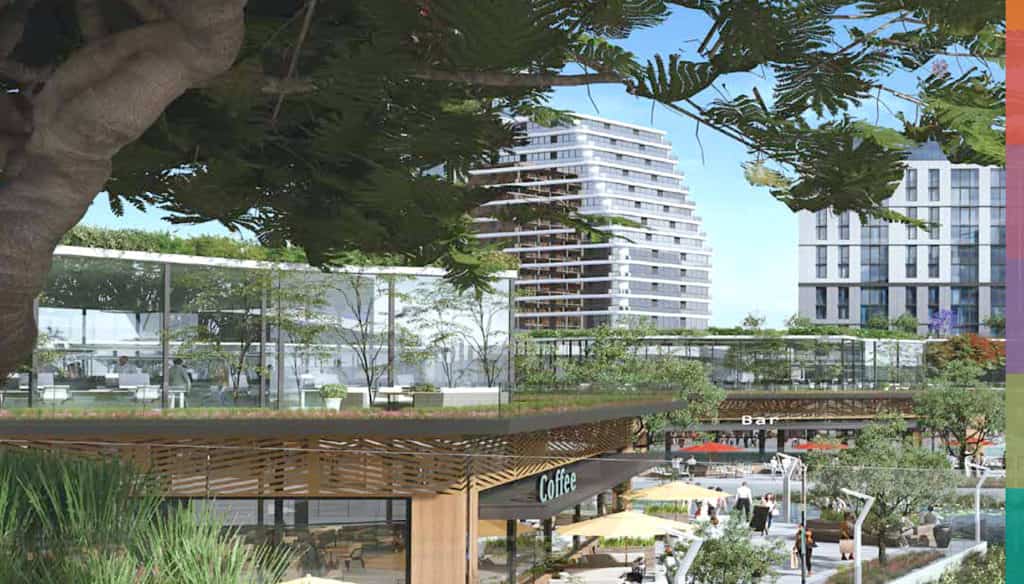
A rendering of Creekside, Midtown Development’s reimagining of the Tropicana Field site.
Portman-Third Lake
Master developer: Portman Holdings
Development team: Seven companies including Third Lake Partners (investment general partner) and Echelon (senior advisor).
Plan highlights: PTL (Portman and Third Lake) said it would invest “significant equity” into the redevelopment. Portman said it typically contributes from 10 percent to 30 percent of the required equity. The developer anticipates total development cost of $2.3 billion for the option that includes a ballpark, and $2.6 billion for the option without a ballpark.
PTL’s proposal calls for 3,910 residential units and 4.5 million square feet of residential space, including affordable housing based on a variety of income levels and product types, interspersed throughout the site; 2.4 million square feet of commercial/office space; 380,000 square feet of hotel and conference space; 348,000 square feet of institutional space; 305,000 square feet of retail space; and 216,000 square feet of cultural and arts space.
It would take place in five overlapping phases and create a total of 17,704 direct and indirect jobs, with a $2.8 billion economic impact.
Focus on equity: “PTL has worked with its design team to drive a vision shaped by this spirit of communal growth and regeneration to outline a plan that will restore the ideals that made this site great once before. A core component of our plan is working to establish a district where neighbors know one another and those who come to call it home can live purposeful lives with economic opportunity and the prospect of upward mobility. The Tropicana Redevelopment involves constructing more than just buildings; it’s about reconstructing a community.”
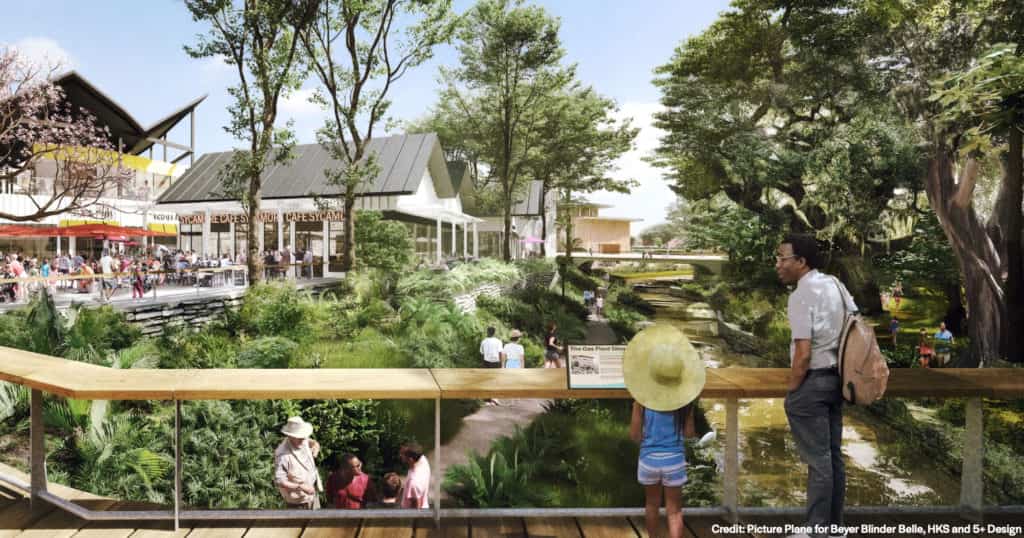
Creekside Village is part of the plan from Portman Holdings and Third Lake Partners.
SROA
Master developer: Storage Rentals of America (SROA)
Development team: Holabird & Root and ARGO Systems; no local partners listed
Plan highlights: SROA expects to partner with institutional capital sources, including public and private pension plans, global asset managers and private equity firms. Public funding will be required for developed infrastructure such as streets and waterways. The estimated total construction value is $2.67 billion.
The plan includes about 2.3 million square feet of multifamily housing with 2,100 apartment units that are 50 percent affordable and 50 percent market rate. It calls for up to 675,300 square feet of office space; up to 470,000 square feet of retail and restaurant space; and 390,000 square feet for a tech campus.
Construction would take place in three phases, from 2022 to the late 2030s. The company did not provide specifics on jobs created or potential economic impact.
Focus on equity: “The design and development team set out to create a vision for a community inclusive of the diverse programmatic requirements that respects the original pre-Rays stadium urban fabric and community, and combines that history with a forward-thinking, environmentally- friendly pedestrian scale vibrant mixed-use neighborhood … In our design, it was important that the land use parcels were not exclusive to one use or purpose; but are programmed to accommodate and promote a mixture of complimentary uses. This integration of diverse program throughout the site provides an even and equitable distribution of economic opportunities. The entire site is not only a place for living and working, recreation and entertainment; it also creates a diverse range of employment opportunities within the site.”

SROA’s proposal includes a mixed-use courtyard.
Sugar Hill
Master developer: JMA Ventures
Development team: 24 companies, including Blue Sky Communities; BackStreets Capital, DDA and J Square Developers; 3 Daughters Brewing; Behard + Peteranecz Architecture; Johnson Pope; B2 Communications
Plan highlights: The plan is not specific on finances. “Additional progress on project parameters and timing is required before capital structure can be accurately described. We will be prepared to discuss as necessary at the appropriate juncture,” the developer said.
The first phase of the plan calls for a 650,000-square-foot convention center and associated 500-room hotel. Other key elements a 500,000-square-foot technology campus, a minority-owned brewery and urban farming. There also would be a total of 2.67 million square feet of residential units and 2.2 million square feet of office space, in a scenario without a ballpark.
Blue Sky Communities has set a goal of developing 35 to 40 percent of the total residential units on the site as affordable, for households earning 80 percent of the area median income, and an additional 10 percent to 15 percent of the units as workforce housing for households earning up to 120 percent of the area median income.
The project would be built in five phases between 2024 and 2033. Construction costs would total about $3 billion with nearly 31,000 construction jobs created. The number of permanent jobs that would result was not disclosed.
Focus on equity: “SHCP is committed to redeveloping Tropicana Field based on the core values of inclusion and equity, which we believe is the most fitting way to honor the history of the site.” The developer said its approach includes sustained engagement with the city’s Black community, reconnection to south St. Petersburg by demolishing I-175 or creating a footbridge over it, restoring historic nomenclature and design, including a history walk, and providing small business opportunities.

The Sugar Hill plan from JMA Ventures would include a residential neighborhood along the Pinellas Trail.
Sky Wave
Master developer: TRS Development Services
Development team: 13 companies, including Blue Sky Communities, Kimley-Horn, and Phelps Dunbar
Plan highlights: TRS equity for site development is between $13.35 million and $16.35 million. The developer said a program similar to Penny for Pinellas would be required for an affordable housing district.
The plans include three luxury high-rise condo towers, as well as 480 apartments and up to 280 affordable dwelling units. There also would be a 240-unit senior multifamily residential community, as well as high-tech research office space.
The proposal outlines a 12-phase construction plan through 2027, with an estimated $475 million in construction costs. About 750 permanent jobs would be created.
Focus on equity: “The development will stay true to St. Petersburg’s historical roots while celebrating the culture and diversity that makes this city so special.” The developer said its community benefits program aligns with the city’s, addressing employment goals, living wags, small business participation, workforce training opportunities, affordable housing, childcare opportunities and early childhood programs, transportation and mobility improvements and sustainability initiatives.
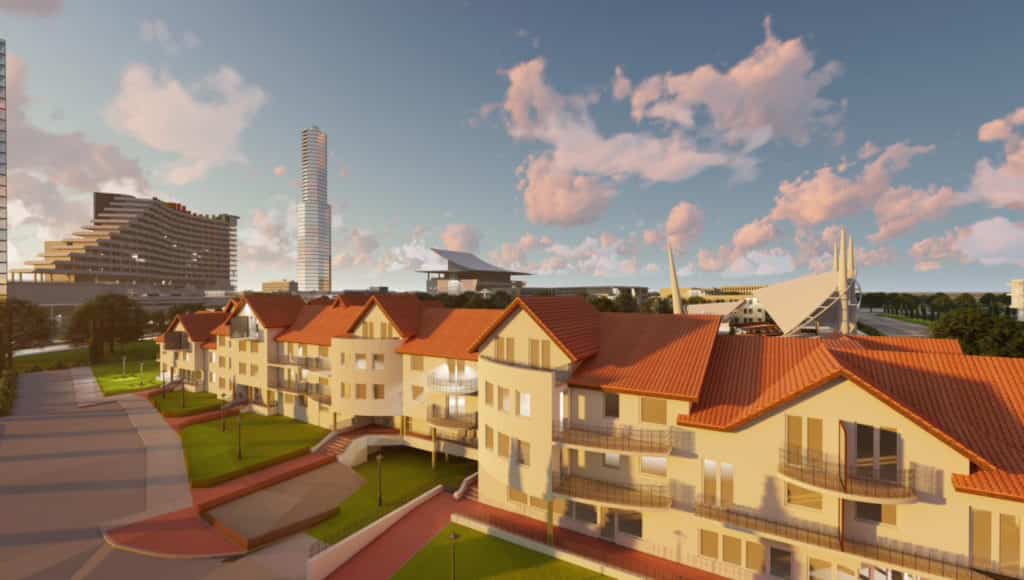
A rendering of some of the housing proposed by TRS.
Petersburg Park
Master developer: Unicorp National Developments
Development team: 11 companies, including Feldman Equities, Colliers International, Stearns Weaver Miller, Kimley-Horn and B2 Communications
Plan highlights: Unicorp said it would invest about $30 million in the project, which is about a 35 percent equity commitment to the total project.
Without a stadium, the plan calls for 3,448 dwelling units, including affordable, workforce, market rate and luxury housing. It includes 312,000 square feet of lifestyle and commercial retail space, 155,000-square-feet of office space, a 66,000-square-foot conference center and 400-room hotel, as well space for an innovation district and flex space. It would be built in three phases.
Unicorp said the project would provide more than 4,000 permanent jobs with an increase to city tax revenue of $233 million over 20 years.
Focus on equity: The plan would re-establish the city’s historic street grid network. It depicts a Greenway Park in the place of I-175. “The benefits of transforming this zone into community recreational gathering areas add to the values of resiliency, health and wellness goals of the City’s Integrated Sustainability Action Plan (ISAP), and by associating it into the transformation of Tropicana Park into Petersburg Park makes a reference to the History of the Former Gas Plant Neighborhood that once existed by providing a new story for the future.”

Petersburg Park, as proposed by Unicorp
Wendover
Master developer: Wendover Housing Partners
Design team: Five firms, including George F. Young Inc. and Kissinger Campo & Associates
Plan highlights: Wendover Housing would be the main equity investor for the residential development. Business Park Development Corp. would serve as main equity investor and developer on most phases of the commercial development. The developer said it did not anticipate relying on financial assistance form the city in the form of local bonds or tax increment financing.
The plan calls for 1,286 units of affordable and workforce multifamily housing, which accounts for more than half of the total residential count of 2,196 units across multiple phases. It also includes more than 2 million square feet of commercial office, hotel and campus/tech space.
The developer said it anticipates more than $2.4 billion to be invested in in new construction, with 6,300 new construction jobs created for every $1 billion spent on construction. It said the potential for permanent jobs post-construction number “in the thousands.”
Focus on equity: “Our best chance to help the underserved community surrounding this site build new generational wealth is to ensure you have a mixed income, mixed use, transit-oriented focus to the development. These three elements together can infuse neighborhoods with opportunities and resources to fuel long-term growth and revitalization. Research has shown that mixed-income neighborhoods strengthen social networks and social capital to improve the productivity and outcomes of low-income citizens. We are living in a time where rental prices are high, and the supply of affordable housing is insufficient to meet the needs of current demand. By increasing the amount of long-term affordable housing in a high opportunity area like Tropicana Field, we support and grow the adjacent neighborhoods with young residents who will foster an amazing source of innovation and creativity.”
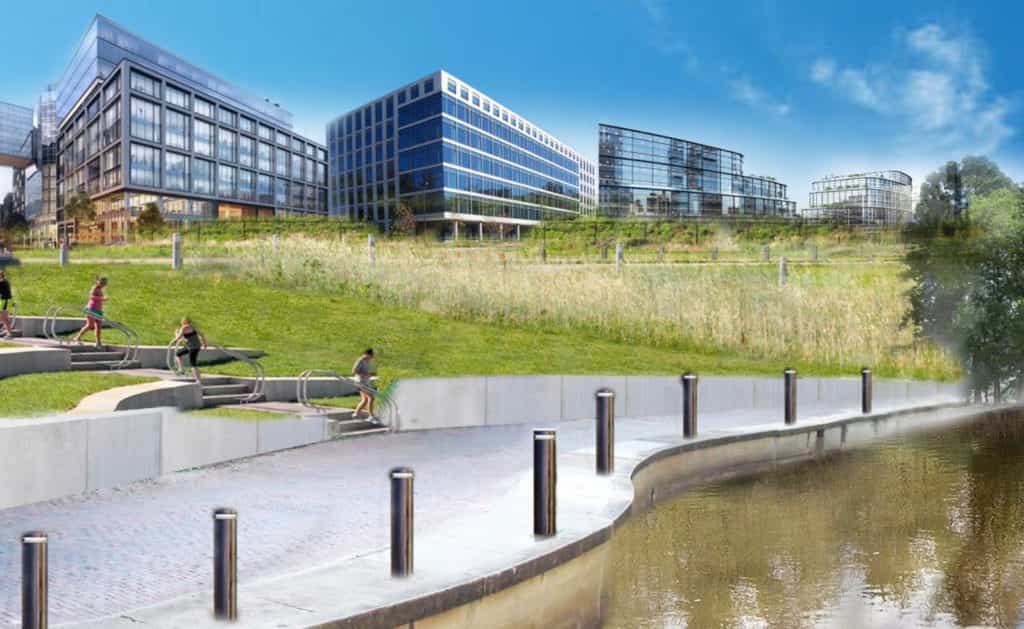
Wendover’s plan includes a rendering of Class A office buildings to the west of Booker Creek, with pedestrian access and a multi-modal paved path that would run along the winding creek.




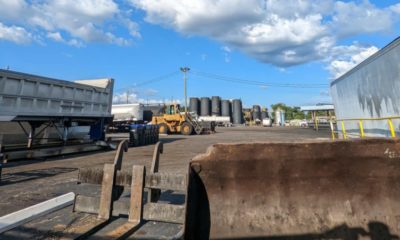

Melba Jean thompson
March 19, 2021at10:47 am
As a long time resident, Here we go again spending too much money (the pier is a good example) again. First, the city needs green space. The city did do the gas plant residents wrong and they should have their input. Also, who of this group is local developers. Surely we should work with local people. You can talk about affordable apts, but the longterm residents can’t afford to live here. How is our sewage systems going to support this. It hasn’t been that long ago our sewage was over flowing into the bays. Who knows about the water systems. Seriously, green space walkways, exercise equipment and covers for picnics and parties. Who needs more stores and condos? I remember St. Pete in the good ol days.